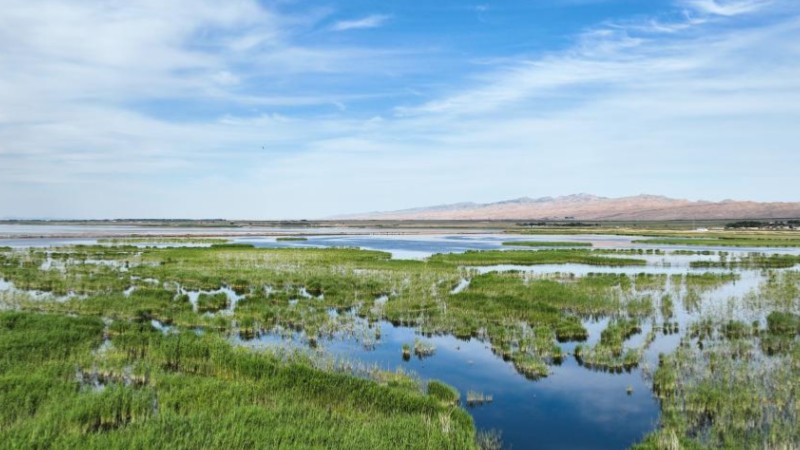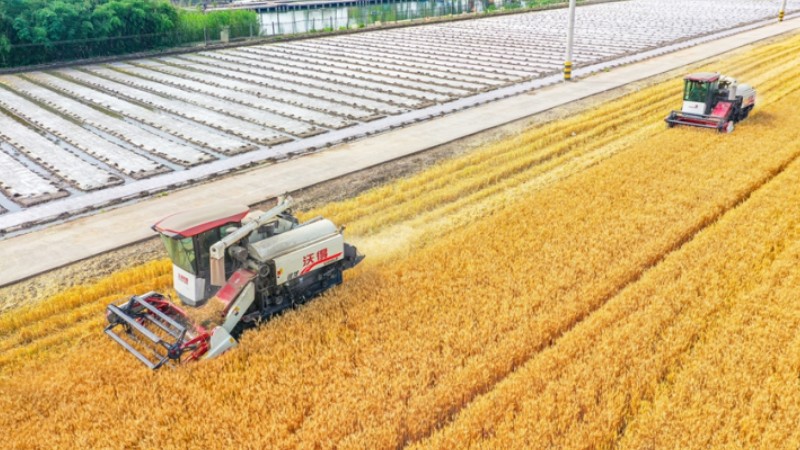Hainan's thriving mangroves underscore growing conservation efforts
HAIKOU, June 5 (Xinhua) -- During high tide, swaths of mangrove trees form a green sea over a vast wetland in south China's Hainan Province, and when the tide ebbs, their crisscross roots protrude out of muddy land.
Such is the beauty of the Hainan Lingshui Mangrove National Wetland Park, located in Lingshui Li Autonomous County in the southern province of Hainan. The coastal park is home to various coastal, river and artificial wetlands, with 21 types of mangrove trees thriving there.
However, just a few years ago, the area presented a strikingly different picture compared to its current state.
"In the past, there were a lot of messy fishponds, and local fishermen just discharged wastewater into the lagoons where the park is located," said Wang Qilin, Lingshui's deputy mayor. "These activities severely damaged the local mangrove forests."
In recent years, authorities in Hainan have taken a variety of measures to enhance the protection of the trees, including transforming the fishponds back into wetlands. From 2016 to 2021, the province transformed 2,777 hectares of ponds into wetlands, with newly planted mangrove forests reaching about 1,400 hectares.
According to the latest figures from the provincial department of natural resources and planning, by the end of 2022, the province planted and restored mangrove trees totaling about 717 hectares through centrally-funded restoration projects.
DAMAGE TO MANGROVE FORESTS
Typically composed of evergreen trees or shrubs, mangroves grow in intertidal zones on tropical and subtropical coasts. Dubbed "coast guards," they play a vital role in purifying seawater, mitigating the impacts of wind and waves, and maintaining biodiversity.
In Hainan alone, the coastal cities and counties, including Haikou, Wenchang and Danzhou, boast a substantial expanse of mangrove forests, spanning approximately 6,549 hectares. These regions encompass the majority of the mangrove areas in the province.
However, in recent years, certain regions have witnessed an escalating toll on mangrove trees.
Take Wenchang, situated in northeastern Hainan as an example. In this area, prone to typhoon landfalls, mangrove trees serve as a crucial protective barrier against marine natural disasters. Authorities have designated areas for mangrove protection, but long-term, extensive fish and shrimp-raising industries contaminated the area and caused the number of mangrove forests to shrink.
Fu Shipei, 50, who is a local resident of Wenchang's Liangfeng Village, holds cherished childhood memories of the mangrove forests in the area.
"Over the past decades, thousands of fishponds and shrimp ponds have emerged and expanded, encroaching upon marine waters," Fu said, adding that these ponds literally ate the forests little by little.
However, the dwindling number of mangroves triggered a series of chain reactions.
"The ocean's ecosystem was damaged, and the coastal villages' ability to weather natural disasters waned," said Huang Hongshan, deputy head of Wenchang's city bureau of natural resources and planning. "You have to understand that Wenchang is a main landing area for typhoons."
GROWING PROTECTION EFFORTS
To protect the environment, authorities in Hainan adopted a variety of measures.
For instance, in 2017, the provincial government issued a guideline, specifying the goal of wetland restoration and proposed plans for restoring mangrove wetlands. A year later, the provincial legislature passed a wetland protection regulation, improving the legal system for wetland protection. In 2019, the Hainan government issued a guideline, setting the goal of increasing an additional 2,000 hectares of mangrove forests by 2025.
In various localities of Hainan, wetland restoration work has begun, with Lingshui investing 760 million yuan (about 107 million U.S. dollars) in ecological restoration since 2016. To date, over 700 local fishing families have voluntarily restored their fish-raising farms to their natural state as part of mangrove forest conservation efforts.
"The water here has become clean, and white cranes come to visit in droves," said Wang Zhiqiang, a wildlife expert from Lingshui. "We have observed the presence of sandworms in the forests, indicating an environment of exceptional quality as these creatures require pristine water to live."
Meanwhile, authorities compensated local fishermen with money while also offering them jobs as forest patrollers for additional income.
Similar measures have been taken in places such as Wenchang, where the mangrove area has reached 187 hectares after restoration.
To enhance conservation efforts, it is important to map out guidelines for wetland protection and rural revitalization, and set up standards in wetland protection, said Zhan Changzhi, who works with the Haikou University of Economics.
Photos
Related Stories
Copyright © 2023 People's Daily Online. All Rights Reserved.









